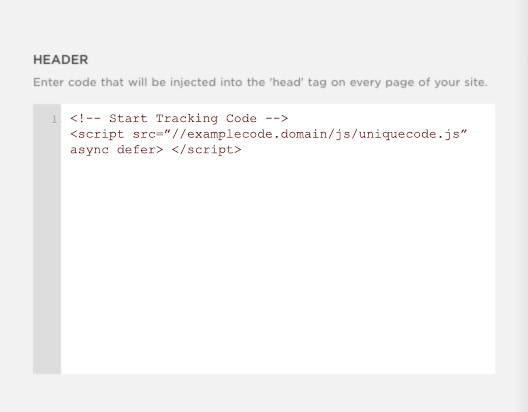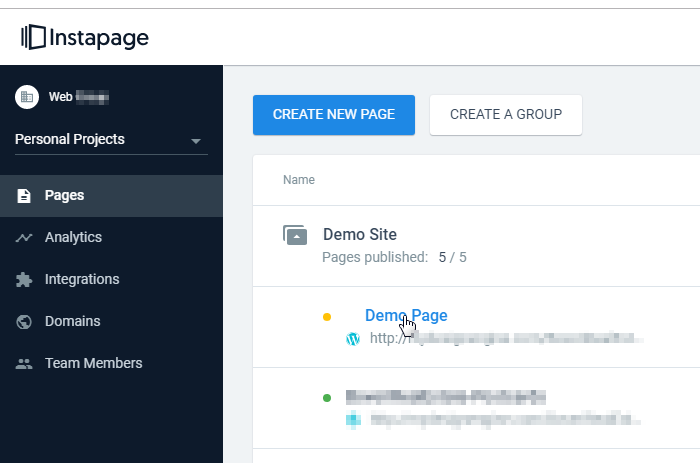Postcard Retargeting Tag Placement Instructions for Agencies
Select For:
Follow these instructions to add the tag to your website
Click above or scroll to select the website platform.
Adding the Tag to WordPress
The tracking code must be placed in the <head> section of your website. In WordPress, there are multiple ways to accomplish this. Here are the methods we found to work the best.
Method 1: Adding code through your WordPress Theme
Every WordPress theme is different. It is the overall design of your website, and each one has its own set of options and customizations. Many times the Theme Options will include an area to add code to the <head> section of your website. Check to see if this is available on your website. You may need to refer to your Theme’s documentation to find out if this is available.
Method 2: Use a Plugin
A plugin is a simple way to add the tag code to your website. It should work whether or not your theme has the option to add <head> code in.
- Once signed into your WordPress website, go to Plugins and click Add New.

- We Recommend Using the plugin Head, Footer and Post Injections by Stefano Lissa.
We have no affiliation with this plugin or author. If you have another plugin already that you would prefer to use, that should be okay, as there are many alternatives.
We have found this one easy to use and it works well. - Use the search terms “Head, Footer” and press Enter/Return on your keyboard to search.

- Click Install Now to the plugin called “Head, Footer and Post Injections”
- Go to Plugins and Activate your newly installed plugin.

- Go to Settings and click Header and Footer

- In the first tab named Head and footer, insert your code into the first text box.
This will add the tag code to every page of your website.
- Scroll to the bottom of the page and click Save.

- That’s it! Start identifying your visitors to create leads and opportunities from your web traffic.
Adding Tag Code to WIX
The tracking code for the tag must be placed in the <head> section of your website. Your WIX powered website has this option built in.
- Once signed into your WIX website, go to the Dashboard.

- Click the Site Actions button for the website you want to add the code to. Then click Edit Site.

- From the top menu, click Settings and then Tracking & Analytics.

- Click </> Custom. The same link is listed in two locations.

- Add the tag code into the area provided. Click Apply.

- Verify that the code has been added and is turned on.

- That’s it! Start identifying your visitors to create leads and opportunities from your web traffic.
Adding Tag Code to SquareSpace
The tracking code must be placed in the <head> section of your website. In SquareSpace, this feature is available in all Business and Commercial plans as well as Legacy Personal Plans (no longer available to new subscribers). Code cannot be added to new Personal Plans.
Once you get the tracking code, log into your SquareSpace account.
- Click the Home Menu
- Navigate to Settings, click Advanced and then click Code Injection

- Paste your tag code into the Header

- Click Save.
- That’s it!
Start identifying your visitors to create leads and opportunities from your web traffic.
Adding Modern iO code to Shopify
Method 1: Adding code to your Shopify Theme
Every Shopify theme is different. You can refer to your specific Shopify theme documentation to see if there is a way to inject code into the theme’s header or footer. This is the advanced method.
Method 2: Custom Plugin / Application
Shopify offers a custom App that makes adding code to the <head> section of your site a breeze. This is what the majority of our Shopify customers use and is the preferred method.
This app was not created by, nor is affiliated with us.
Once you add the App to your store, you can paste in the Tag and begin retargeting website visitors with Direct Mail!
Step 1: Add App to Shopify
https://apps.shopify.com/insert-code-to-header-and-footer

Step 2: Install the app. It requires basic theme permissions.

Step 3: Click the button to Add New Code.
This plugin allows you to add multiple, separate codes, but we only need one.

Final Step: Add the Head code to your page.
Save when finished.

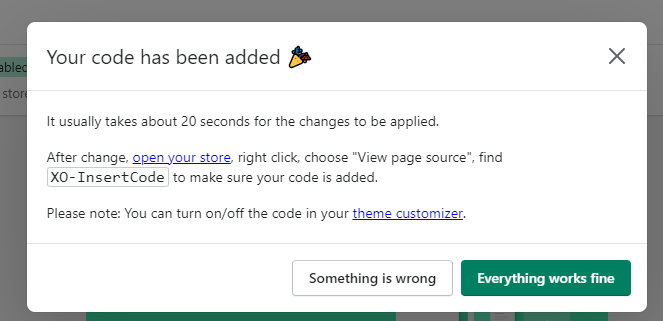
Code can be added, edited, or temporarily disabled through the app settings.
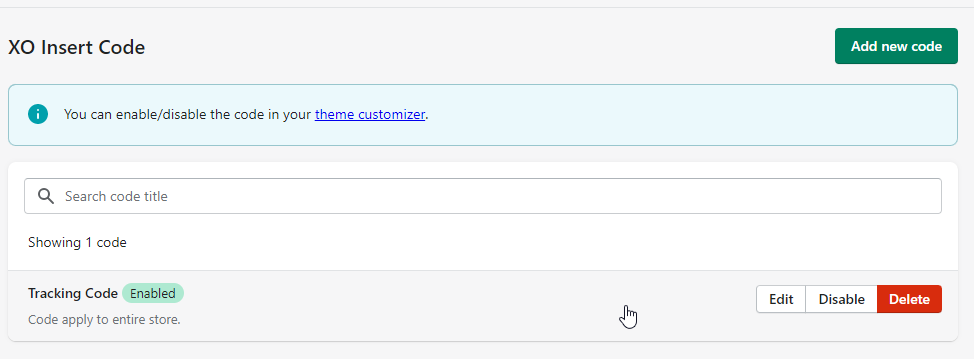
All Shopify Users: Please follow the instructions from the PDF link below to add the tag to your Shopify Conversion page.
If you have a Shopify Plus account – follow these instructions to enable the tag on the Checkout page.
Adding Tag Code to Magento
A single line of code must be added to your website before we can re-target visitors. This code is placed in the <head> section of your website. The Magento eCommerce platform has a built in method to add this code, which only takes a couple of minutes. Note: This requires you to be on the Magento 2 platform. Magento 1 requires a theme edit.
Once we send you your unique tag, log into your Magento account.
Navigate to the Admin Panel, then select Content > Configuration
This will list your Store Views.
Depending on your configuration, you may have to edit one or several stores.
Select Edit on Store View(s) you want to place code on.

In each Store View, expand the section HTML Head, and locate the section Scripts and Style Sheets.
Paste in the tag code after any code that may already be present.
Save Configuration

It’s now recommended to flush your cache to make sure the code shows up.
Go to the Admin Panel
Then select System > Cache Management (under the Tools sub heading)
Press the orange Flush Magento Cache button.
That’s it! Let us know this has been added and we will verify that your Magento site is now ready to re-target visitors.
Adding Tag Code to InstaPage
The tag must be integrated into your website before it can start collecting data. The Instapage platform makes this fairly easy and has a built-in area for adding the tracking code.
Once you get the tracking code, log on to your InstaPage account.
- From the Dashboard, select Pages
- Open up the page you want to add the tag too. If you want this on multiple pages, you will have to repeat these steps for each page.

- Once the page is open, select “Scripts & GDPR” from the left navigation

- Add your unique tracking code to the FOOTER section and hit SAVE and then UPDATE.

- That’s it!
Start identifying your visitors to create leads and opportunities from your web traffic.
Adding Tag Code to Google Tag Manager
Login: to Google Tag Manager, or set up an account if needed.
Overview Section: go to overview on the left hand sidebar.
New Tag: click on the section that says “New Tag”.

Untitled Tag: you’ll see a section to set up your tag called “Untitled Tag”
Tag Configuration: click in this area.

Choose Tag Type: choose Custom HTML for the tag type.

Untitled Tag: see “Tag Configuration” window, Copy & Paste the tag code exactly as received, and SAVE your work.
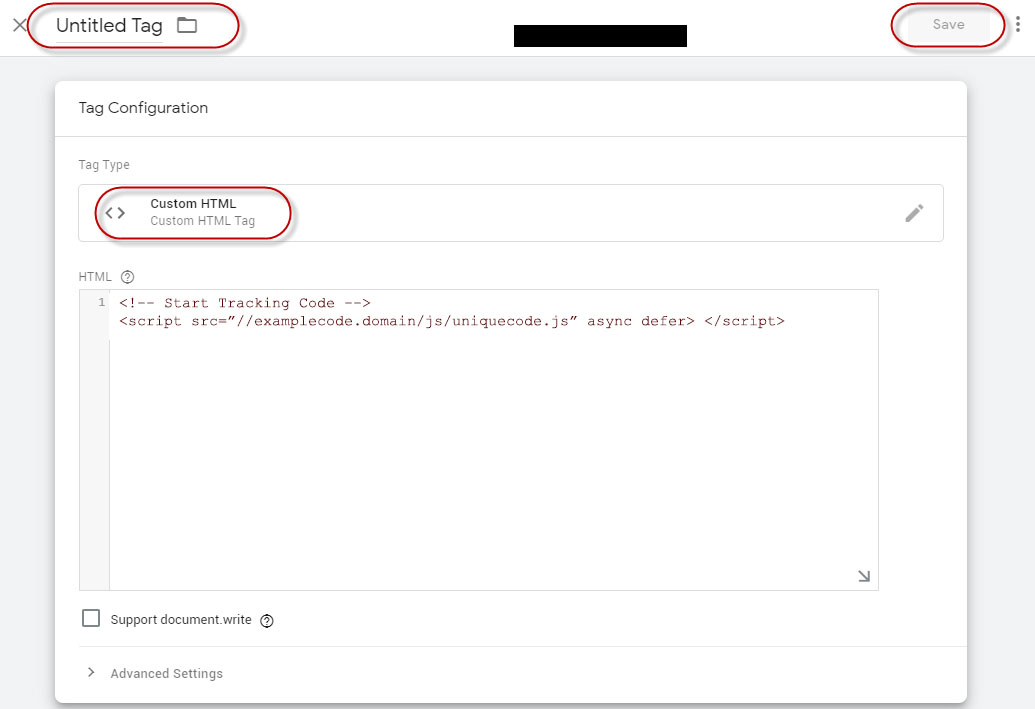
Triggering: choose “All Pages” for the trigger. We recommend choosing all pages so that we can report the data per page for strategic reasons. We will set up the campaign and the urls that will receive cards programmatically, be sure to SAVE your work.

Submit Your Tag: be sure to click the SUBMIT button, and that will take you to another screen; you’re not done yet.

Publish the Tag: click on PUBLISH, this is a simple but often missed step in the process; you won’t collect data until it’s published.

Adding Tag Code to BigCommerce
The BigCommerce website platform has a Script Manager that allows you to add the website tag.
- Log in and navigate to the Storefront

- Go to the “Script Manager”

- Create a new script using the following settings:
Location on page: Footer
Script category: Analytics
Script type: URL
The actual script is unique to you and will be emailed upon setup.
SAVE
- That’s it. The Script Manager should now show the active script. It can be edited or deleted at any time.















